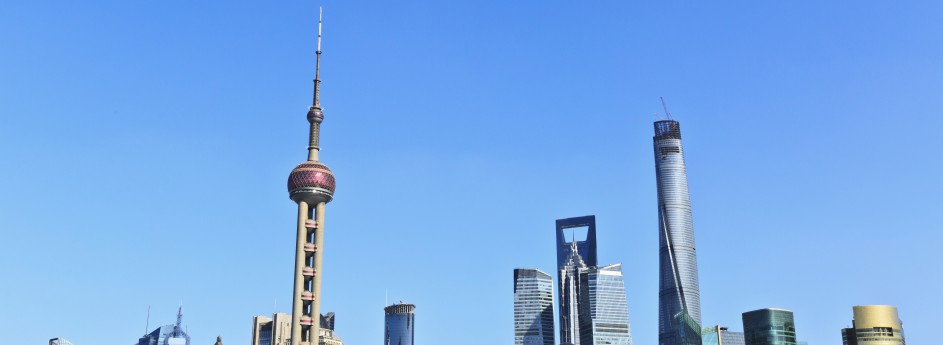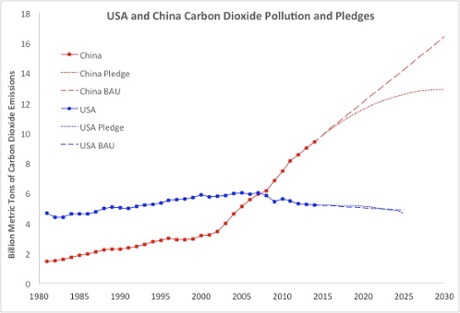China: Let’s Get Going With the BRICS Bank
China is anxious to start operations of the Shanghai-based New Development Bank for fear of inertia, bureaucratic logjams, and domestic politics of BRICS countries that could muck up the bank infrastructure-building agenda. Serving the pressing needs of BRICS countries efficiently and effectively is one of the bank’s credos.
China on Saturday urged BRICS nations to speed up the creation of a development bank as an alternative to the Western-dominated global financial system.
The BRICS group of emerging economic powers — which also includes Brazil, Russia, India, and South Africa — agreed in July to form the New Development Bank to finance infrastructure projects and an emergency reserve fund.
The Chinese have already chosen a site for the future Shanghai headquarters of the US$50 billion facility and China’s vice finance minister Zhu Guangyao is keen to get moving.
“All (countries) share the view that they should speed up the process to have it completed as quickly as possible,” he said on the sidelines of the G20 summit in Australia.
“And each country will identify feasible projects for the bank as quickly as possible, so that at the moment the bank is launched it will be able to immediately carry out (financing) processes.”
Chinese state media has said the BRICS bank aims to reduce Western dominance of the global financial system, while criticising multilateral agencies like the World Bank and the International Monetary Fund.
For the past 70 years, the International Monetary Fund and the World Bank have been the pillars of the world’s economic system, coming to the rescue of countries in trouble and supporting development projects, respectively.
But the Bretton Woods institutions are regularly criticized for their inability to reflect the growing and important contributions of the major emerging economies to the global economy.
Since their creation in 1944, the IMF and the World Bank have only been led by Americans and Europeans.
– AFP
China Will be Doing the Heavy Lifting Under the China-US Climate Change Pact
With key exceptions, Western media, governmental, and institutional/NGO responses to the “game-changing” agreement on climate change signed in Beijing at the APEC Summit between China and the US has generally been positive.
Yet, with some condescension, Time magazine remarked that “China had grown up” while the Atlantic Monthly sarcastically described China as an “overgrown teenager, large and powerful but clumsy and developing” who had finally come around, no longer being obstinate in rejecting caps on its CO2 emissions. Meanwhile, the Christian Science Monitor opined that China had finally accepted “universal values” as if China did not perceive the health of the planet as a common value of all human kind.
But, sarcasm and political rhetoric aside, among the most unfair criticisms were unsurprisingly uttered by US Republic House Majority Leader John Boehner and soon-to-be Senate Majority Leader Mitch McConnell. The latter blasted China as having pledged to “do nothing” regardless of China’s position as a much poorer developing country. A Guardian essay countered that if China was intent on maintaining business-as-usual and doing “nothing”, it would be hard pressed to meet its pledges.
Here’s what the two countries committed to: the US side will reduce greenhouse gases (GHG) by 26-28% below 2005 levels by 2025. The Obama Administration had previously consigned to reducing emissions by 17% by 2020. The US will also double emissions cuts of 1.2% per year from 2005-2020 to 2.3 to 2.8% from 2021 to 2025. To keep its promise, the US would submit the new reduction targets by the end of the first quarter in 2015 as its contribution to the UN Framework Convention on Climate Change treaty that will be finalized in Paris late next November.
For its part, China will target CO2 emissions to peak around 2030 or before as well as expand renewable energy sources to about 20% of total usage (from the current 8%) by the same year. This is in line with a 2011 Lawrence Berkeley National Laboratory study that predicted China’s CO2 emissions would peak around 2030 due to high carbon intensities involved in a number of sectors that China continues to invest substantially in. This pledge requires China to install up to 1,000 gigawatts of new sources of nuclear, hydro, wind and solar power.
The Guardian retorted, on the contrary, it is the US that will have a relatively easy time to meet its new commitments. US CO2 emissions are already 10-15% lower than in 2005 and falling by 1.5% a year. The new cuts will only require the US to continue on the current path, albeit a little faster. So, it is Senator McConnell who has vastly misrepresented the challenges facing each nation.
According to the Economist magazine, China has emitted more GHG than America since 2006 and by 2014-15 China’s total will be twice that of the US and coal burning remains by far the largest component of the country’s energy mix. Observed historically, however, the 10 biggest emitters from 1850 to 2007 were respectively the US (28.8%), China (9%), Russia (8%), Germany (6.9%), US (5.8%), Japan (2.8%), India (2.4%), Canada (2.2%), and Ukraine (2.2%). China’s per capita CO2 emissions were 5.83 t/capita in 2010 compared to 17.2 t/capita in 2009 for the US or roughly 1/3 of the US.
The tasks that lay ahead for China are daunting. In an interview with NPR, Roger Pielke, Jr., a professor of environmental studies at the University of Colorado, underscored, “That’s roughly the same as deploying one nuclear power plant of carbon-free energy every week starting today until 2030.”
A renewable energy plan devised by China’s National Energy Administration called for the boosting of hydropower to 290 gigawatts by next year that would average 6% growth since 2010. Wind power will top 100 gigawatts, marking 26% annual growth and solar power will rise to 21 gigawatts growing at 90% per year. As well, China has 22 nuclear power plants in operation and 26 being built/planned. In addition, China’s national nuclear corporation will team up with Canada’s Candu Energy to develop reactors that can use spent fuel from conventional reactors.
Reduction of coal use is imperative as 80% of China’s electricity is generated using the dirty fuel. Cited by AP, Alvin Lin, China climate and energy policy director with US-based National Resources Defense Council projects China will have to hit coal reduction targets at least 5 years ahead of 2030 to reach its target. The country also must introduce and enforce even tougher energy efficiency standards, milder versions of which have been implemented since the mid 2000s.
Going forward, China must overhaul its energy infrastructure to use more renewables and provide sufficient incentives for especially commercial and industrial consumers to switch to renewables and to conserve energy. Chinese banks and various levels of government are being called upon to facilitate more financing and provide tax breaks for energy users to install solar panels and other renewables equipment like in the US.
China will also need to build more efficient power plants and buildings along with better wind turbines and other clean energy equipment and infrastructure. The Xinhua News Agency reports the US and China are collaborating to build a major carbon capture and storage (CCS) facility on the Chinese mainland. In this respect, perhaps SaskPower’s flagship CCS facility at the Boundary Dam coal-fired power plant in Saskatchewan, the world’s first operational commercial scale CCS plant, could serve as a model.
‘Occupy Central’ Students Now Want to Occupy British Consulate
Will there be no end to this nonsense! The students can’t be SO naïve as to believe that in spite of imperial era governor Chris Patten’s recent rants against the HK government, the UK is actually going to jeopardize its economic, financial and trade relations with China to give open support to their erroneous ideas and economy-damaging protests, especially when the Brits had no intention of granting HK citizens the right to vote when they ruled the colony in the first place. The student protestors, as the Chinese saying goes, “don’t know how high is the sky and how deep is the earth”.
…
Activists say they want to show their anger at Britain for not standing up to China over “breaches” of the agreement the two countries made before Hong Kong was handed back to China by Britain in 1997, designed to protect Hong Kong’s social systems and way of life.
“We are angry at the way that the British government has for many years denied that China has actually breached the declaration by interfering with Hong Kong politics,” Anna-Kate Choi, the coordinator for the Occupy British Consulate group told AFP.
“They have the responsibility to make sure that the joint declaration has been implemented properly and that democracy and the high degree of autonomy of Hong Kong has been protected,” Choi said.
The group is a new offshoot of the protest movement, Choi added, with around 10 organisers from all walks of life including a secondary school student.
…
Britain and China are signatories of the 1984 Sino-British Joint Declaration, an agreement that enshrines the “one country, two systems” principle and states that until 2047 “the current social and economic systems in Hong Kong will remain unchanged.”
But activists feel that Britain is turning a blind eye and that China is eroding Hong Kong’s freedoms.
Posters for the British consulate occupation bear the slogan: “China breaches the joint declaration, UK government respond now” with the pro-democracy movement’s umbrella symbol emblazoned with the British flag.
– AFP




